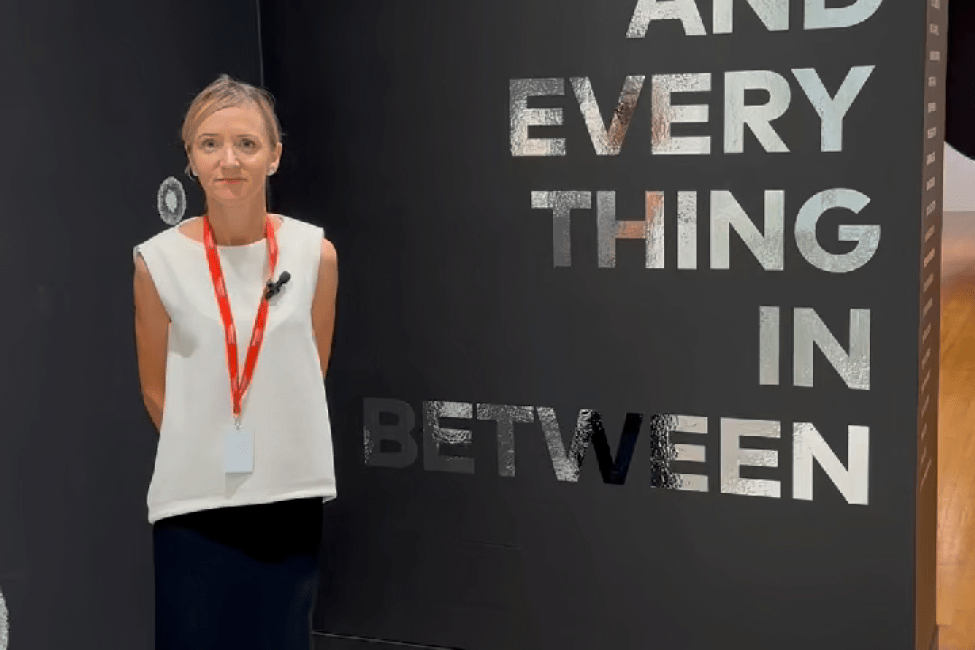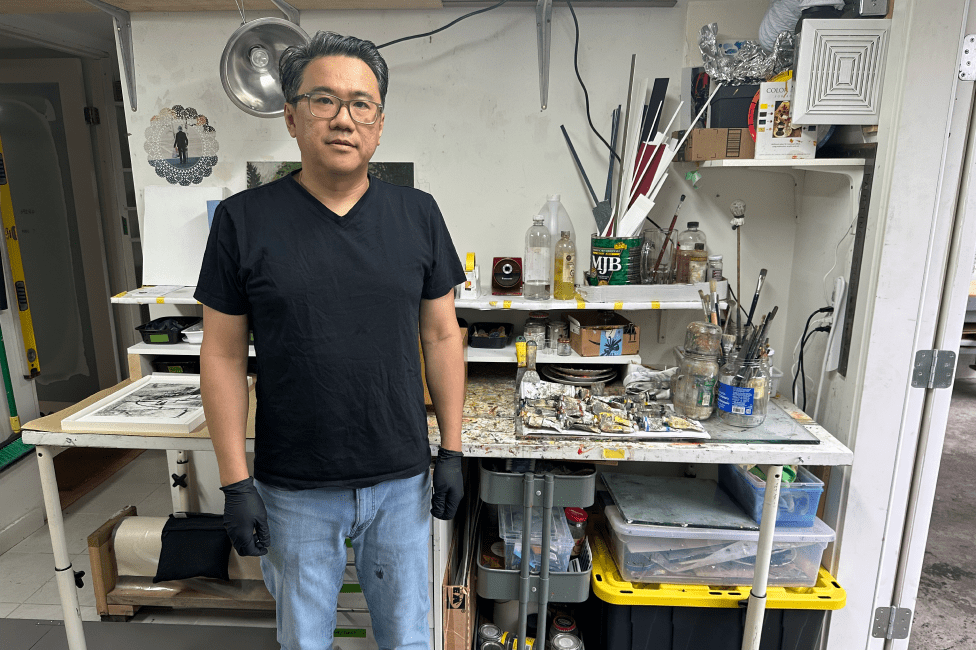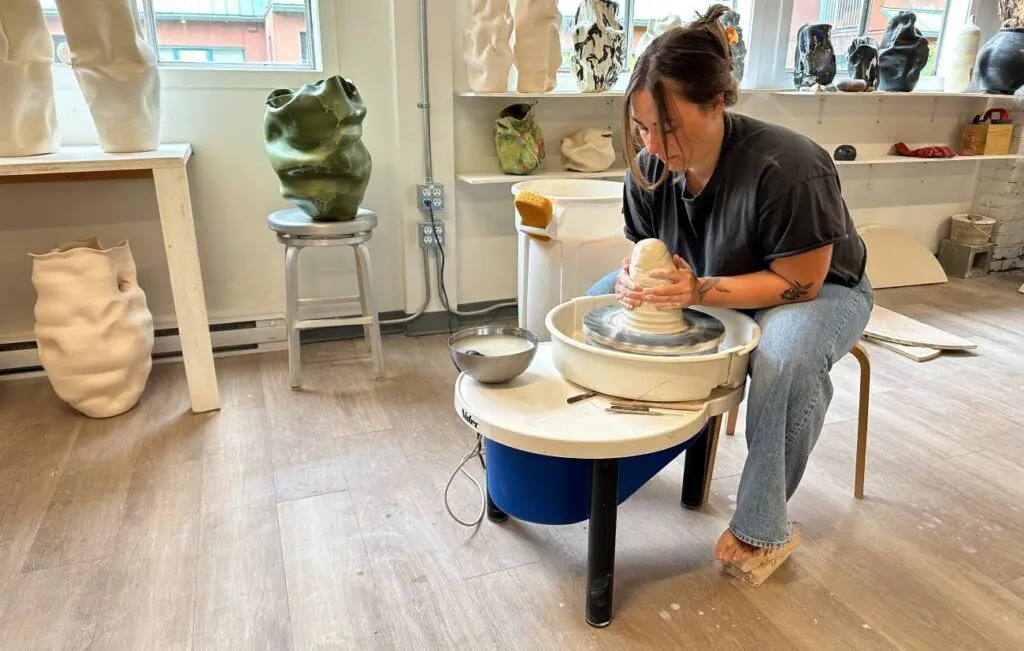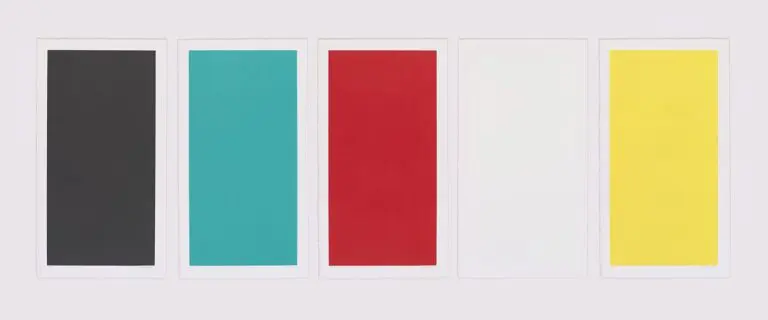Ruby Singh on Vox.Infold
In conjunction with the exhibition Black and White and Everything In Between: A Monochrome Journey, we spoke with Vancouver artist, performer, composer and producer Ruby Singh in his East Vancouver studio to talk about his practice and bringing a multi-sensory, monochrome experience to life in the exhibition.
Watch the video interview to get a closer look at Singh’s studio and artistic process.
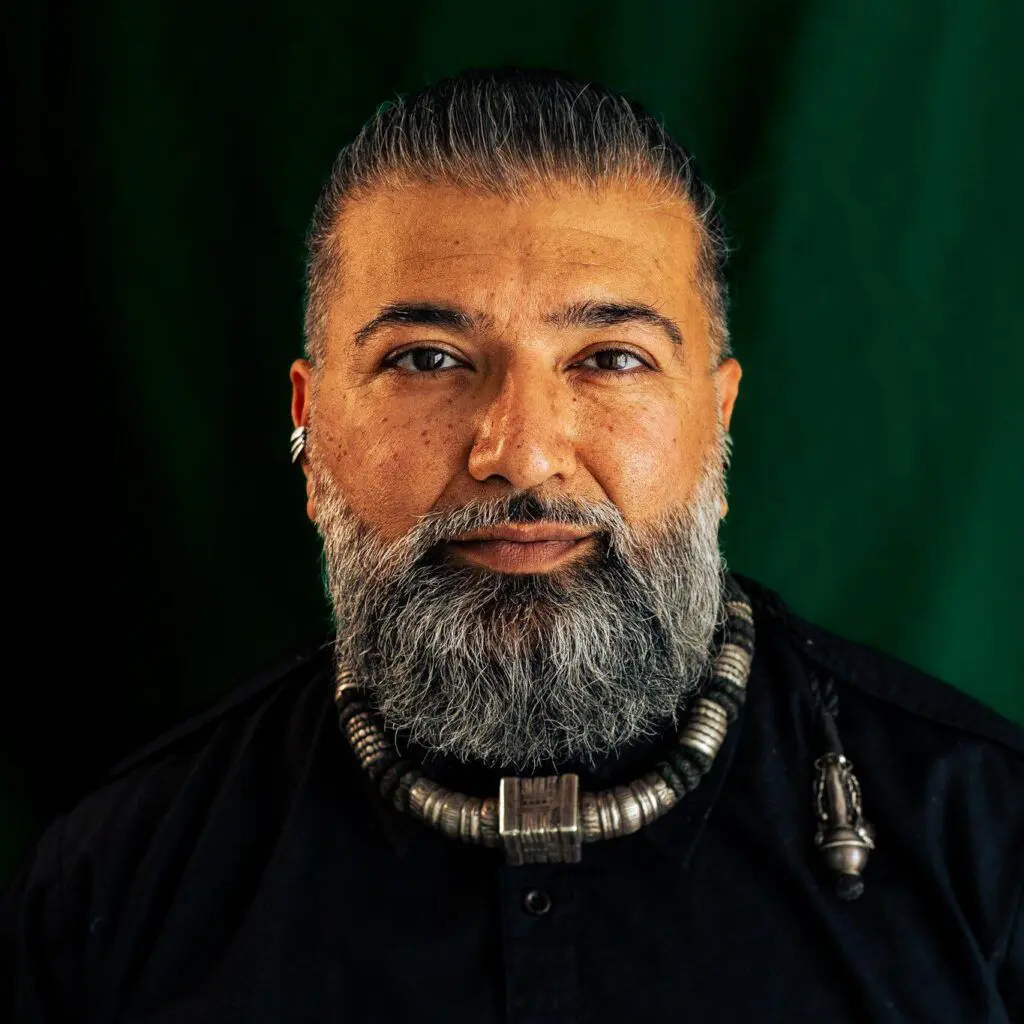
Ruby Singh
Please introduce yourself.
Ruby Singh (RS): My name is Ruby Singh. I am the son of migrants from Panjab and live as an artist on the stolen and occupied lands of the Musqueam, Squamish and Tsleil-Waututh nations.
Can you tell us a bit about your multimedia practice?
RS: I don’t prescribe to the colonial notions of bordering creativity. In my practice, I allow myself to follow my curiosities, and those generally end up mixing mediums. My imagination tends to interconnect sound, visual and poetry and spit them out simultaneously, and sometimes I’ve fallen deep into a poem and a melody emerges, and other times I’m working in sound, and a visual representation emerges. I’ve been thinking recently that a lot of my work is about making the invisible visible, and that requires a multisensory approach.
Where do you find inspiration for your work?
RS: I tend to find inspiration almost everywhere, from the heliocentric whirling of our solar system to these animal bodies and how we sense the world through bioelectric understandings. I draw a lot of inspiration from the natural or more-than-human world, like the dawn chorus bird songs that greet the sun around the globe, the filtering of light through trees and the refraction in water, the smell of a freshly rained on forest, the sounds of rivers, creeks, waterfalls and the ocean. And who doesn’t draw inspiration from the moon in all its phases; when you catch a crescent moon in the middle of the day, or you can walk in a dark forest that’s lit up silver by a full moon. I’m also inspired by spirit and mysticism and our studies of these ghosts inside us and how humanity has sought to understand ourselves and that which we cannot touch. Time as a whole is inspiring when it comes to rhythms, but I will also reach into my family’s history and lean into futurism and sci-fi to understand my place in the world in the now.
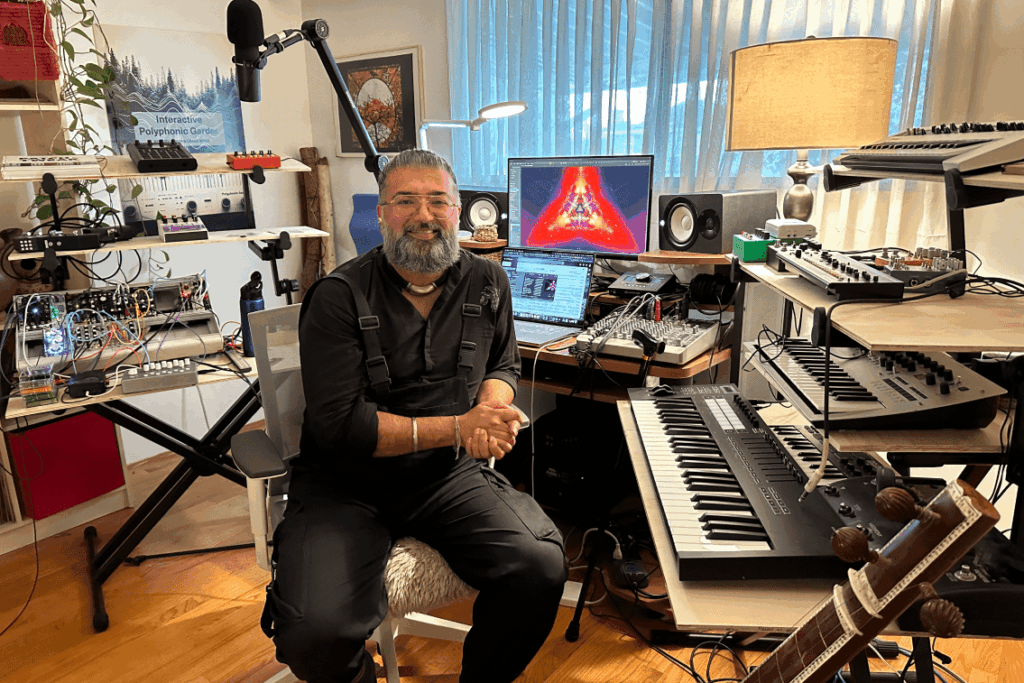
Ruby Singh in his studio, 2024
Can you tell us a bit about your work Vox.Infold (2022), featured in the exhibition Black and White and Everything In Between: A Monochrome Journey?
RS: I wanted to bring together Indigenous, Black and South Asian voices to explore what was possible outside of the gaze or desires of whiteness. I love the human voice and all the potential that exists there. Being a beatboxer, I’ve spent a lot of time exploring how sound can emerge from our beings. I wanted to bring together some of my favourite BIPOC vocalists to see what might be possible through collaboration. I like to think of it as sound sculpture because the audio is spatialized so the voices are moving with intentional direction.
Can you elaborate on the work in the context of the monochrome? It reads like a black square, but, instead of a flat, two-dimensional canvas, it is a 3D room, a sculptural “void.” How do you read this work as a “black monochrome”?
RS: When Diana first approached me to be part of the exhibit, I was instantly drawn toward black. In recent years, I’ve been obsessed with the idea of void and how all potential lives there. The work of Dr. Karen Barad has been particularly inspiring while studying the void. And when we looked at the possibilities of where it could go, and we learned I had access to that little outcropping, I instantly knew I wanted to paint it all black and create a sound sculpture that could live within the void. I wanted to have the listener be lost in the void, lost in the potential, lost in the possibilities with sound as a guide.
Can you speak to your decision to have the room painted black, except for the small white dot or “third eye”?
RS: When I first came back to the space, I felt like there was something missing in all that darkness, and I wanted to provide an anchor amidst the void that folx could hold on to, and I chose the bindu. “Bindu” is a sanskrit word that means drop, point or dot. In Vedic mysticism, it’s the symbol of the cosmos in its unmanifested state, the origin point of creation. I also always like to award attention span, and something special happens when you focus on the sound and stare into the bindu. But it takes a while, and I encourage anyone taking in the piece to see what happens.
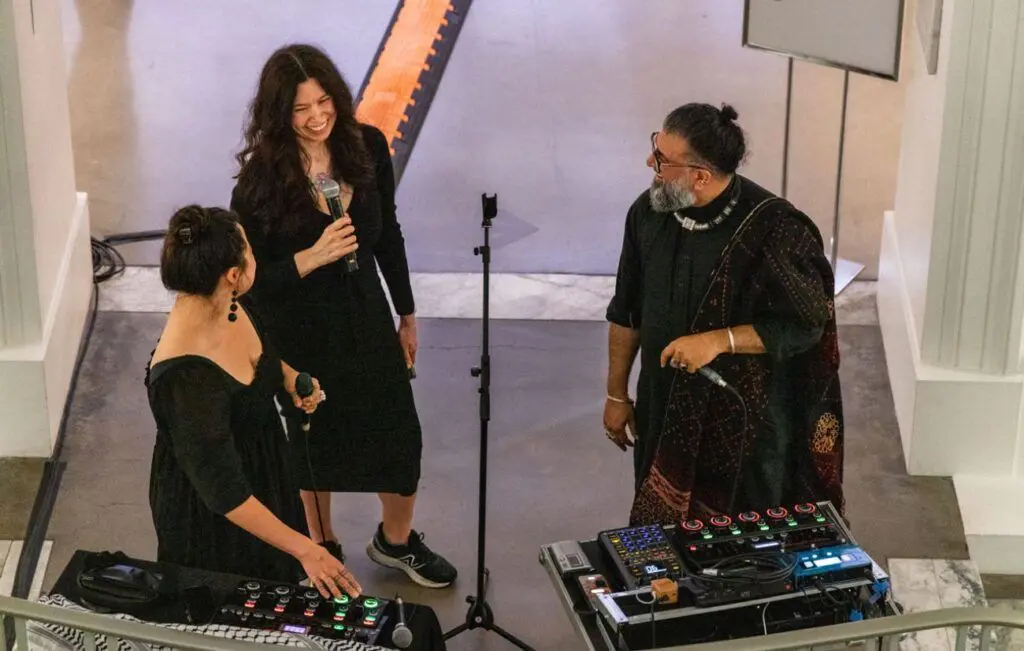
Ruby Singh performs Vox.Infold (2022) with Tiffany Ayalik and Tiffany Moses at Art Opens Summer Celebration, June 2024, Photo: Vancouver Art Gallery
Vox.Infold brings together your voice with those of musical luminaries Dawn Pemberton, Inuksuk Mackay and Tiffany Ayalik of PIQSIQ, Russell Wallace, Tiffany Moses and Shamik Bilgi. Have you worked together in the past? How did this ensemble come together?
RS: All these folx have been long-time friends and artists that I’ve admired, as well as past collaborators in one form or another, but the group was a unique constellation that I called together for Vox.infold. I continue to have amazing collaborators who are just as much incredible humans as they are musicians. This work would truly not be possible without them.
What do you think of this sound work being presented in an art gallery alongside visual art?
RS: I love this sound work being presented in an art gallery alongside visual art. I really enjoy the listening quality of an art gallery and the attention and focus that can be given to sound. I find galleries allow for a certain level of introspection, and that’s such a great place to approach sound from. I hope to do more work in gallery settings moving forward.
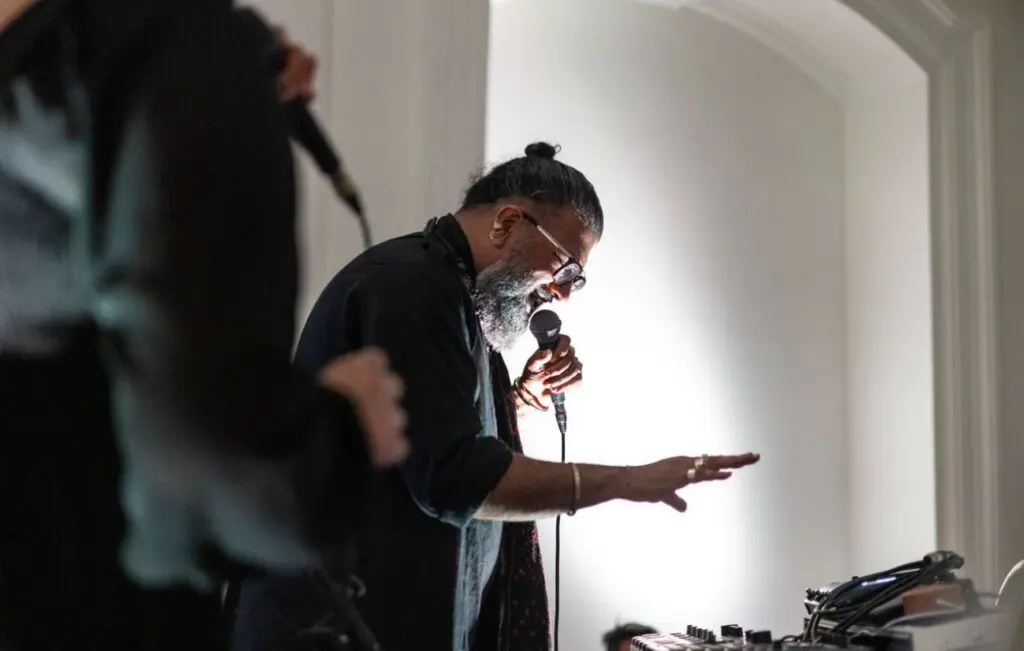
Video still, Courtesy of Ruby Singh
What does a multisensory gallery experience mean to you and why is it important?
RS: We are multisensory beings, so to be able to think and experience artfully through multiple senses, well, just makes sense. I find our culture definitely favours visual mediums. To create multisensory spaces provides more routes for inspiration, curiosity and understanding of this human condition. Sound, in particular, has such clear emotive qualities and can make one feel immersed within as opposed to observing from outside the work.
What do you hope visitors will take away with them or consider after experiencing your work at the Gallery?
RS: I really leave that to the visitor’s perception and don’t necessarily want to prescribe the experience for anyone. There’s a lot to take in, and I like to trust the audience to experience it with their own hearts and intelligence.
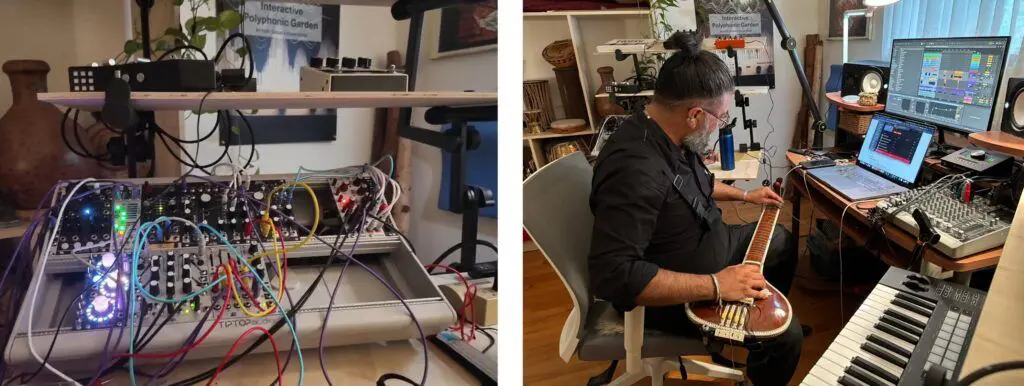
Ruby Singh’s studio, 2024
FOLLOW RUBY SINGH ON SOCIAL MEDIA
DELVE DEEPER INTO THE EXHIBITION
Closing November 3, Black and White and Everything In Between: A Monochrome Journey uses colour as an organizing principle, creating unexpected juxtapositions that allow us to see familiar works in new ways. Don’t miss this ode to the monochrome! Delve deeper into the artists’ exploration of colour through a selection of interviews.

